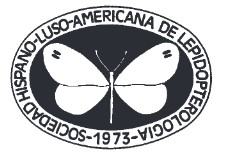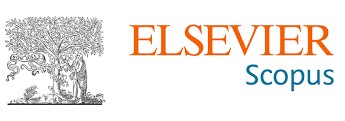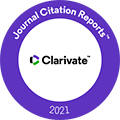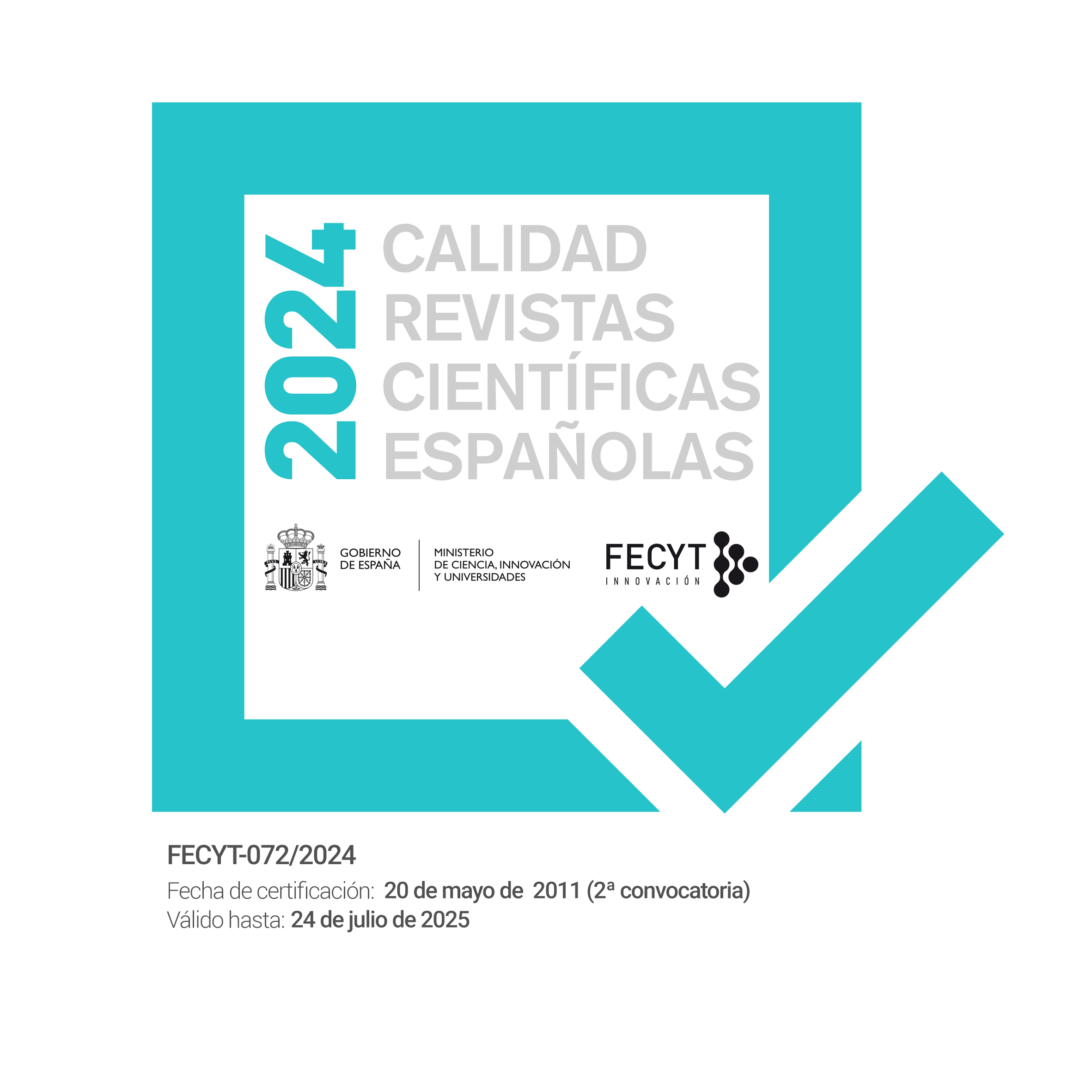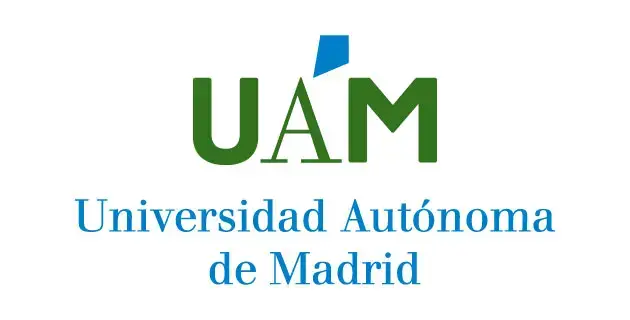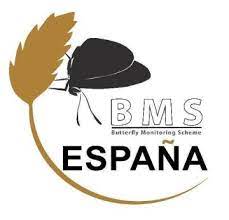Primera planta nutricia y estado inmaduro de Hydropionea fenestralis Barnes & McDunnough, 1914 en el Valle de Perote, México (Lepidoptera: Crambidae)
DOI:
https://doi.org/10.57065/shilap.952Palabras clave:
Lepidoptera, Crambidae, código de barras de ADN, barrenador de semillas, nivel de daño, Asparagales, Hydropionea, distribución, MéxicoResumen
Identificamos Hydropionea fenestralis Barnes & McDunnough, 1914 alimentándose de semillas de frutas de Agave salmiana var. ferox (K. Koch) Gentry y A. salmiana subsp. salmiana (Asparagaceae), basándonos en el código de barras de ADN y la morfología en etapa adulta. Este es el primer registro de planta hospedera, último instar, y también constituye el primer Lepidoptera barrenador de semillas asociado con especies de Agave en México. La subespecie y variedad de Agave se utilizan para la producción de bebidas fermentadas tradicionales llamadas pulque, que son la base económica y cultural de la región. El porcentaje promedio de daño en las frutas varía desde 13.9±19.9% hasta 33.2±2% en A. salmiana var. ferox y A. salmiana subsp. salmiana, respectivamente. La evidencia molecular confirma la distribución de H. fenestralis en el centro de México, en los estados de Veracruz y Puebla, ampliando el rango geográfico conocido de la especie. Este registro parece ser una planta hospedera inusual para la
posición filogenética actual de H. fenestralis dentro de la subfamilia Glaphyriinae, cuyas larvas se alimentan preferentemente de plantas Brassicales.
Descargas
Estadísticas globales ℹ️
|
975
Visualizaciones
|
219
Descargas
|
|
1194
Total
|
|
Citas
Barnes, W., & McDunnough, J. (1914). Some new North American Pyraustinae. Contributions to the Natural History of the Lepidoptera of North America, 2(6), 224-250.
Delgado-Lemus, A., Torres, I., Blancas, J., & Casas, A. (2014). Vulnerability and risk management of Agave species in the Tehuacán Valley, México. Journal of Ethnobiology and Ethnomedicine, 10(1), 1-15. https://doi.org/10.1186/1746-4269-10-53 PMid:24994025 PMCid:PMC4106216 DOI: https://doi.org/10.1186/1746-4269-10-53
Felsenstein, J. (1985). Confidence limits on phylogenies: an approach using the bootstrap. Evolution, 39(4), 783-791. https://doi.org/10.2307/2408678 PMid:28561359 DOI: https://doi.org/10.1111/j.1558-5646.1985.tb00420.x
Figueroa-Castro, P., López-Martínez, V., Toledo-Hernández, V. H., & Rifkind, J. (2017). Primer registro del entomófago Enoclerus zonatus (Coleoptera: Cleridae) asociado con el quiote de maguey mezcalero en Guerrero, México. Revista Mexicana de Biodiversidad, 88(2), 467-470. https://doi.org/10.1016/j.rmb.2017.03.025 DOI: https://doi.org/10.1016/j.rmb.2017.03.025
García-Mendoza, A. (2002). Distribution of agave (Agavaceae) in México. Cactus and Succulent Journal, 74(4), 177-188.
Garrido, G. Y., & Nava-Bringas, M. E. (2017). Descripción del Valle de Perote. In A. Ochoa-Martínez, editor. Valle de Perote. Aspectos bioclimáticos y socioeconómicos (pp. 19-23). IETECArana Editores.
GBIF (2024). Hydropionea Hampson, 1917. http://www.gbif.org/species/1883821
Hajibabaei, M., Janzen, D. H., Burns, J. M., Hallwachs, W., & Hebert, P. D. (2006). DNA barcodes distinguish species of tropical Lepidoptera. Proceedings of the National Academy of Sciences, 103(4), 968-971. https://doi.org/10.1073/pnas.0510466103 PMid:16418261 PMCid:PMC1327734 DOI: https://doi.org/10.1073/pnas.0510466103
Hall, T. A. (1999). BioEdit: a user-friendly biological sequence alignment editor and analysis program for Windows 95/98/NT. Nucleic acids symposium series, 41(41), 95-98.
Hopkins, R. J., van Dam, N. M., & van Loon, J. J. (2009). Role of glucosinolates in insect-plant relationships and multitrophic interactions. Annual review of entomology, 54, 57-83. https://doi.org/10.1146/annurev.ento.54.110807.090623 PMid:18811249 DOI: https://doi.org/10.1146/annurev.ento.54.110807.090623
Janzen, D. H., & Hallwachs, W. (2009). Dynamic database for an inventory of the macrocaterpillar fauna, and its food plants and parasitoids, of Area de Conservación Guanacaste (ACG), northwestern Costa Rica. http://janzen. sas. upenn. edu.
Jiménez-Pérez, N. D. C., Hernández-Jiménez, O. A., & García-Mendoza, A. J. (2021). Agave guadarramae (Asparagaceae: Agavoideae), una especie nueva del sureste de México. Revista Mexicana de Biodiversidad, 92(agosto-septiembre). https://doi.org/10.22201/ib.20078706e.2021.92.3726 DOI: https://doi.org/10.22201/ib.20078706e.2021.92.3726
Kala, C., & Khan, N. A. (2020). Isolation and characterization of isopropyl isothiocyanate isolated from seeds of Drypetes roxburghii wall and its anti-platelet and anti-thrombotic activity. Scientific African, 10, e00658. https://doi.org/10.1016/j.sciaf.2020.e00658 DOI: https://doi.org/10.1016/j.sciaf.2020.e00658
Kimura, M. (1980). A simple method for estimating evolutionary rates of base substitutions through comparative studies of nucleotide sequences. Journal of Molecular Evolution, 16, 111-120. https://doi.org/10.1007/ BF01731581 PMid:7463489 DOI: https://doi.org/10.1007/BF01731581
Laguerre, M. (2014). Partial revision of the genus Homoeocera Felder, 1874, and description of three new species. Antenor, 1(2), 153-172.
Landry, B., Basset, Y., Hebert, P. D., & Maes, J. M. (2020). On the Pyraloidea fauna of Nicaragua. Tropical Lepidoptera Research, 30(2), 93-102.
Magallán-Hernádez, F., & Hernández-Sandoval, L. (2000). La familia Agavaceae en el estado de Querétaro, México. Botanical Sciences, 66, 103-112. https://doi.org/10.17129/botsci.1616 DOI: https://doi.org/10.17129/botsci.1616
Mally, R., Hayden, J., Neinhuis, C., Jordal, B., & Nuss, M. (2019). The phylogenetic systematics of Spilomelinae and Pyraustinae (Lepidoptera: Pyraloidea: Crambidae) inferred from DNA and morphology. Arthropod Systematics & Phylogeny, 77, 141-204.
Martínez-Salvador, M., Valdez-Cepeda, R., Arias, H. R., Beltrán-Morales, L. F., Murillo-Amador, B., Troyo-Diéguez, E., & Ortega-Rubio, A. (2005). Distribution and density of maguey plants in the arid Zacatecas Plateau, Mexico. Journal of Arid Environments, 61(4), 525-534. https://doi.org/10.1016/j.jaridenv.2004.10.002 DOI: https://doi.org/10.1016/j.jaridenv.2004.10.002
Munroe, E., Becker, V. O., Shaffer, J. C., Shaffer, M., & Solis, M. A. 1995. Pyraloidea, (pp. 34-105). In J. B. Heppner (ed.), Atlas of Neotropical Lepidoptera. Checklist: part 2: Hyblaeoidea - Pyraloidea - Tortricoidea. Scientific Publishers, Inc., Gainesville.
Munroe, E., & Solis, M. A. (1999). The Pyraloidea. In N. P. Kristensen. Handbook of Zoology (Vol. 35, pp. 231-256). Walter de Gruyter. https://doi.org/10.1515/9783110804744.233 DOI: https://doi.org/10.1515/9783110804744.233
Nuss, M., Landry, B., Mally, R., Vegliante, F., Tränkner, A., Bauer, F., Hayden, J., Segerer, A., Schouten, R., Li, H., Trofimova, T., Solis, M. A., De Prins, J., & Speidel, W. (2003-2022) Global Information System on Pyraloidea. https:// www.pyraloidea.org.
Powell, J. A., & Opler, P. A. (2009). Moths of western north America (Vol. 64). Berkeley University of California Press. https://doi.org/10.1525/california/9780520251977.001.0001 DOI: https://doi.org/10.1525/california/9780520251977.001.0001
Regier, J. C., Mitter, C., Solis, M. A., Hayden, J. E., Landry, B., Nuss, M. Simonsen T. J., Yen, S. H., Zwick A., & Cummings, M. P. (2012). A molecular phylogeny for the pyraloid moths (Lepidoptera: Pyraloidea) and its implications for higher-level classification. Systematic Entomology, 37(4), 635-656. https://doi.org/10.1111/j.1365-3113.2012.00641.x DOI: https://doi.org/10.1111/j.1365-3113.2012.00641.x
Reynoso-Santos, R. (2012). Identificación taxonómica de agaves (Agave ssp.) utilizados para la elaboración del licor comiteco en Chiapas, México. Agro Productividad, 5(4): julio-agosto.
Rodman, J. E., Soltis, P. S., Soltis, D. E., Sytsma, K. J., & Karol, K. G. (1998). Parallel evolution of glucosinolate biosynthesis inferred from congruent nuclear and plastid gene phylogenies. American Journal of Botany, 85(7), 997-1006. https://doi.org/10.2307/2446366 PMid:21684983 DOI: https://doi.org/10.2307/2446366
Rodríguez, W. D., Navarrete-Heredia, J. L., Vasquez-Bolanos, M., Rodríguez, R., Briceño-Félix, G. A., Blanco, J. M. C., & Ruiz-Cancino, E. (2019). Insects associated with the genus Agave spp. (Asparagaceae) in Mexico. Zootaxa, 4612(4), 451-493. https://doi.org/10.11646/zootaxa.4612.4.1 PMid:31717037 DOI: https://doi.org/10.11646/zootaxa.4612.4.1
Rojas, G. A., Solano, J. P. L., & Pérez, J. E. R. (2007). Diversidad genética en poblaciones de agaves pulqueros (Agave spp.) del nororiente del Estado de México. Revista Fitotecnia Mexicana, 30(1), 1-12. https://doi.org/10.35196/rfm.2007.1.1 DOI: https://doi.org/10.35196/rfm.2007.1.1
Saitou, N., & Nei, M. (1987). The neighbor-joining method: a new method for reconstructing phylogenetic trees. Molecular Biology and Evolution, 4(4), 406-425.
Scholtens, B. G., & Solis, M. A. (2015). Annotated check list of the Pyraloidea (Lepidoptera) of America North of Mexico. ZooKeys, 535, 1. https://doi.org/10.3897/zookeys.535.6086 PMid:26668552 PMCid:PMC4669914 DOI: https://doi.org/10.3897/zookeys.535.6086
Solis, M. (2007). Phylogenetic studies and modern classification of the Pyraloidea (Lepidoptera). Revista Colombiana de Entomología, 33(1), 1-8. https://doi.org/10.25100/socolen.v33i1.9306 DOI: https://doi.org/10.25100/socolen.v33i1.9306
Soltis, P. S., & Soltis, D. E. (2004). The origin and diversification of angiosperms. American Journal of Botany, 91(10), 1614-1626. https://doi.org/10.3732/ajb.91.10.1614 PMid:21652312 DOI: https://doi.org/10.3732/ajb.91.10.1614
Tamura, K., Stecher, G., & Kumar, S. (2021). MEGA11: molecular evolutionary genetics analysis version 11. Molecular Biology and Evolution, 38(7), 3022-3027. https://doi.org/10.1093/molbev/msab120 PMid:33892491 PMCid:PMC8233496 DOI: https://doi.org/10.1093/molbev/msab120
Trejo, L., Reyes, M., Cortés-Toto, D., Romano-Grande, E., & Muñoz-Camacho, L. L. (2020). Morphological diversity and genetic relationships in pulque production agaves in Tlaxcala, Mexico, by means of unsupervised learning and gene sequencing analysis. Frontiers in Plant Science, 11, 524812. https://doi.org/10.3389/fpls.2020.524812 PMid:33013957 PMCid:PMC7505951 DOI: https://doi.org/10.3389/fpls.2020.524812
Vasconcelos, S. T. C., Posadas, L. D. M. R., Moya, E. G., Villa, M. S., & Huerta, N. C. (2020). crecimiento y tasa de intercambio de CO2 de maguey pulquero (Agave salmiana Otto ex Salm-Dyck) obtenido por semilla. Agrociencia, 54(7), 911-926. https://doi.org/10.47163/agrociencia.v54i7.2242 DOI: https://doi.org/10.47163/agrociencia.v54i7.2242
World Flora Online (2024). Available on http://www.worldfloraonline.org.
Publicado
Cómo citar
Número
Sección
Licencia
Derechos de autor 2024 Rogelio Lara-González, Luis A. Lara-Pérez, Ángel I. Ortiz-Ceballos

Esta obra está bajo una licencia internacional Creative Commons Atribución 4.0.
El autor retiene sus derechos de marca y patente sobre cualquier proceso o procedimiento dentro del artículo.
El autor retiene el derecho de compartir, distribuir, ejecutar y comunicar públicamente el artículo publicado en SHILAP Revista de lepidopterología, con reconocimiento inicial de su publicación en SHILAP Revista de lepidopterología.
El autor retiene el derecho para hacer una posterior publicación de su trabajo, de utilizar el artículo a publicarlo en un libro, siempre que indique su publicación inicial en SHILAP Revista de lepidopterología.
Cada envío a SHILAP Revista de lepidopterología debe ir acompañado de una aceptación de los derechos de autor y del reconocimiento de autoría. Al aceptarlos, los autores conservan los derechos de autor de su trabajo y aceptan que el artículo, si es aceptado para su publicación por SHILAP Revista de lepidopterología, tendrá una licencia de uso y distribución “Reconocimiento 4.0 Internacional de Creative Commons” (CC BY 4.0), que permite a terceros compartir y adaptar el contenido para cualquier propósito dando el crédito apropiado al trabajo original.
Puede consultar desde aquí la versión informativa y el texto legal de la licencia. La indicación de la licencia CC BY 4.0 debe indicarse expresamente de esta manera cuando sea necesario.
A partir de 2022, el contenido de la versión impresa y digital se encuentra bajo una licencia de uso y distribución “Reconocimiento 4.0 Internacional de Creative Commons” (CC BY 4.0), que permite a terceros compartir y adaptar el contenido para cualquier propósito dando el crédito apropiado al trabajo original.
El contenido anterior de la revista se publicó bajo una licencia tradicional de derechos de autor; sin embargo, el archivo está disponible para acceso gratuito.
Al usar el contenido de SHILAP Revista de lepidopterología publicado antes del año 2022, incluidas figuras, tablas o cualquier otro material en formato impreso o electrónico pertenecen a los autores de los artículos, los autores deben obtener el permiso del titular de los derechos de autor. Las responsabilidades legales, financieras y penales a este respecto pertenecen al autor(es).
En aplicación del Principio de Prioridad del Código Internacional de Nomenclatura Zoologica, no se autoriza el depósito en repositorios, páginas web personales o similares de cualquier otra versión distinta a la publicada por el editor.





